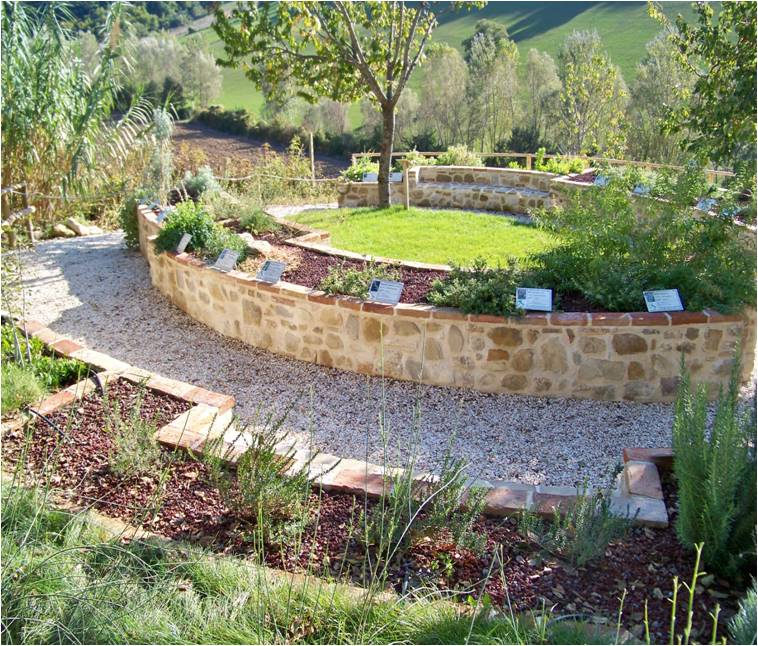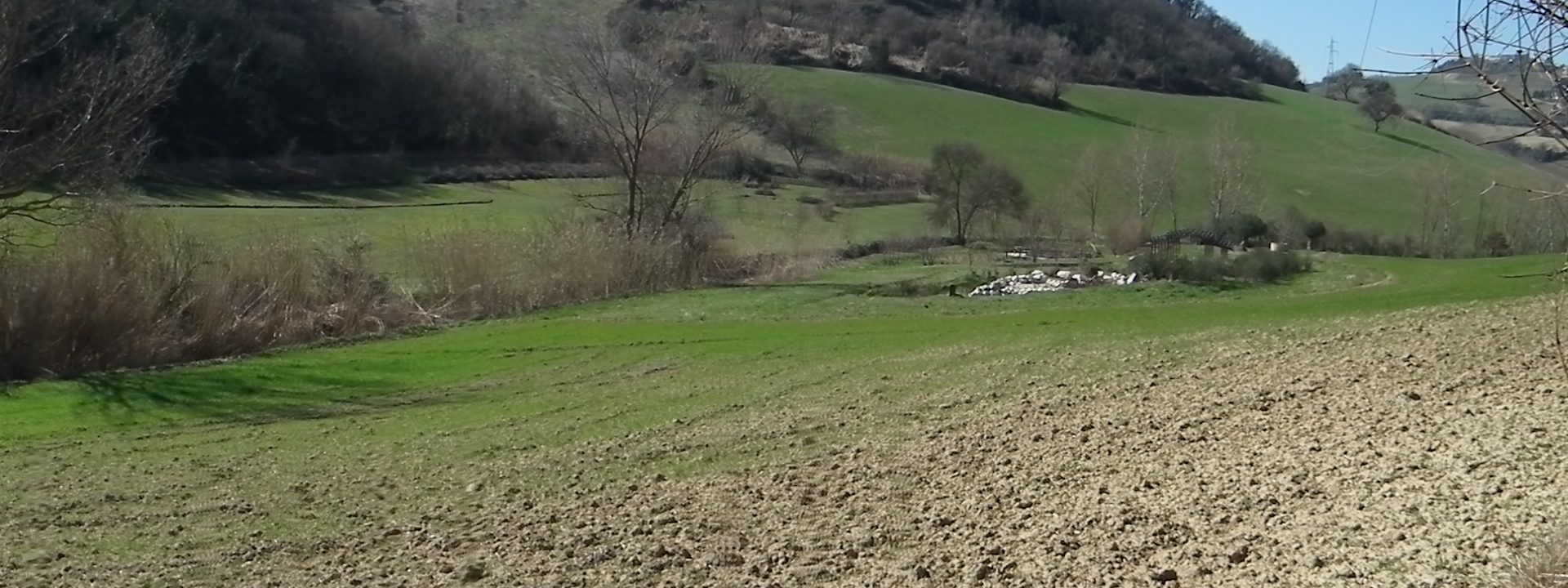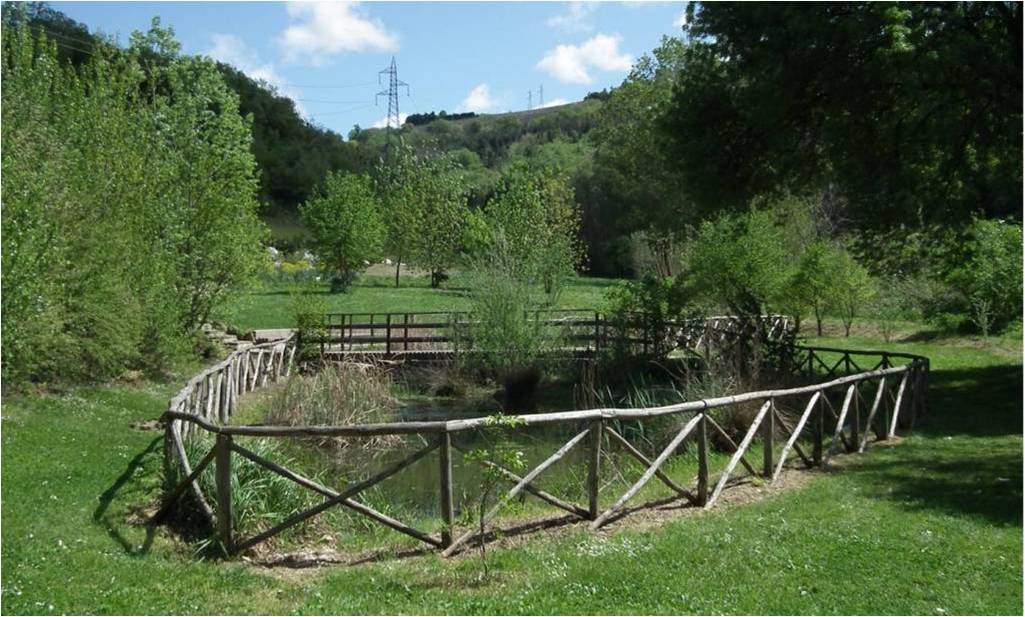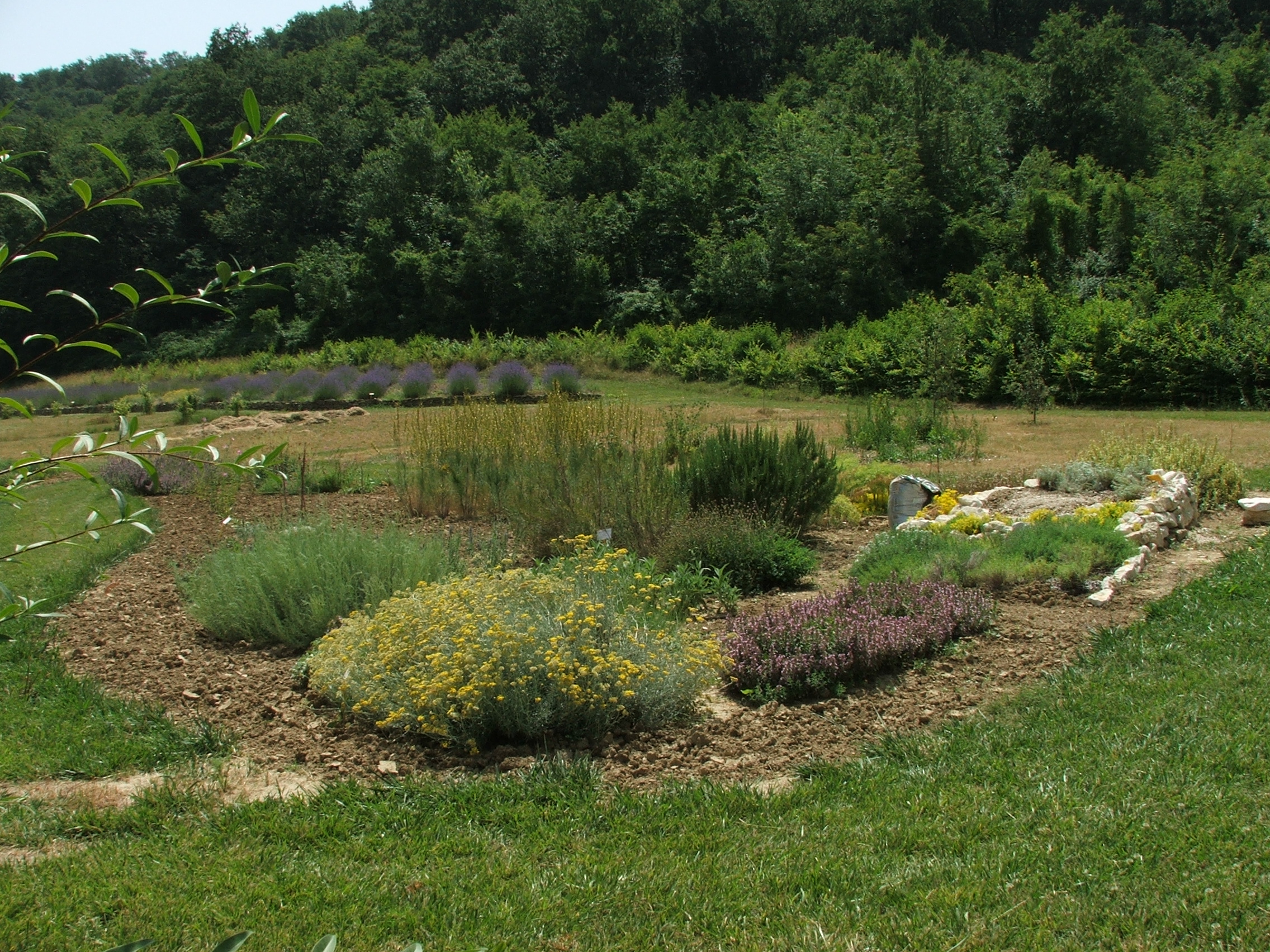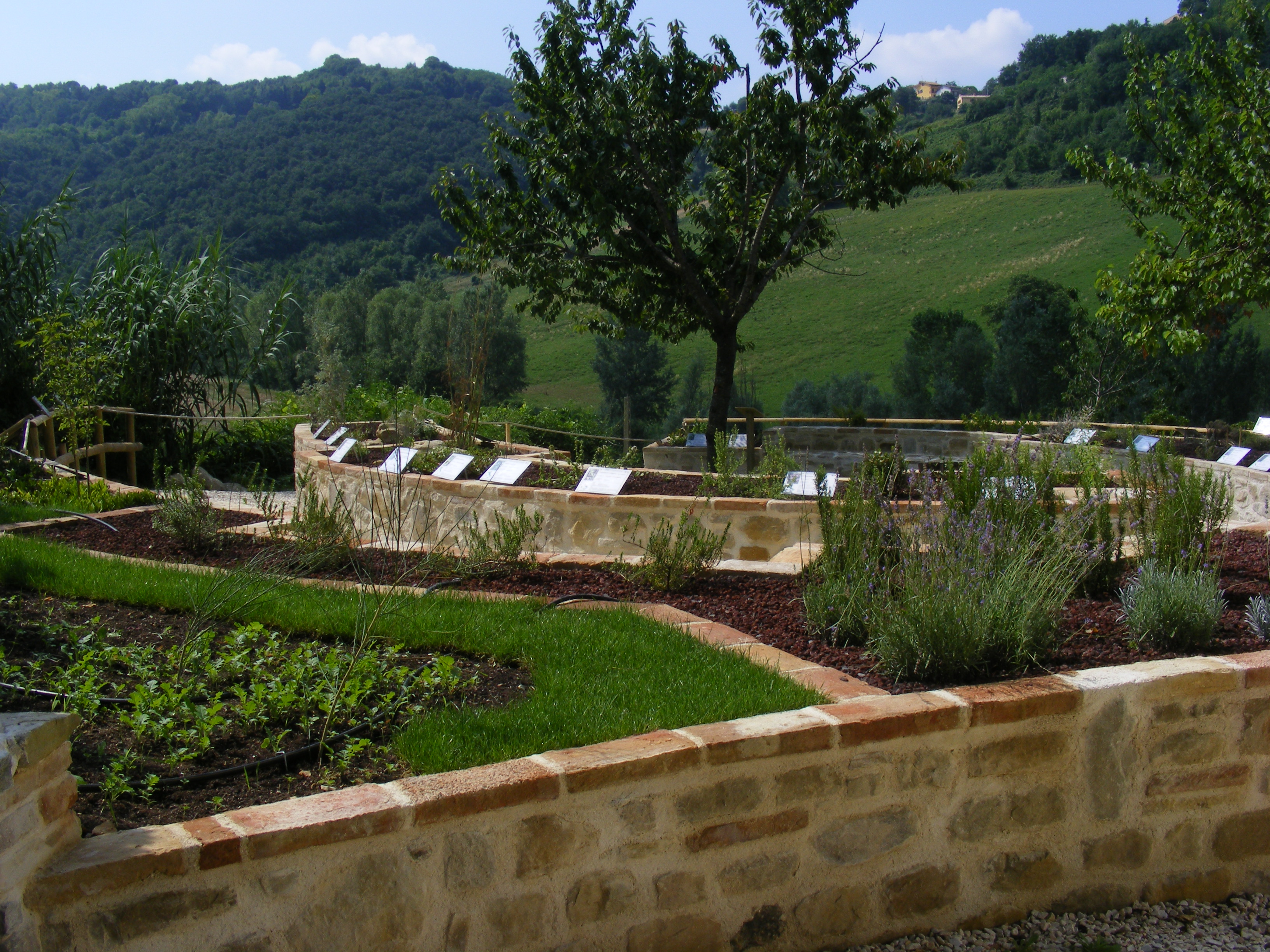
This post is also available in:
 Italiano (Italian)
Italiano (Italian)
This Botanical Garden belongs to the Polytechnic University of Marche and is located in the territory of Gallignano, a small hamlet in the municipality of Ancona, within an area between Mount Conero, the Esino and the Musone Rivers.
Established in 2000, this garden is used for the conservation of the flora biodiversity, as well as for and teaching and promoting environmental awareness. Guided tours and student/teacher courses are regularly offered to increase public interest in the protection of nature and respectful management of our living environment.
Considered a protected area, this facility is also acknowledged as a “botanical-vegetational emergency of exceptional interest” by the Regional Environmental Landscape Plan, as well as a “wildlife-hunting oasis” of the Province by the Municipality of Ancona.
It covers about 37 acres, 20 of which host Gallignano forest, one of the few relics of autochthonous forest vegetation still thriving in the hilly part of Marche Region.
Selva di Gallignano
Despite its limited extension, this forest features a remarkable biodiversity, with 279 entities. It consists of 5 wood environment: a forest of black hornbeams, ashes (Ostrya carpinifolia, and Fraxinus ornus); a core formation; a vast oak forest (Quercus cerris); a rare southern ash wood (Fraxinus oxycarpa), and a small oak wood of Southern live oaks (Quercus virgiliae).
The collections of the Garden
The Mediterranean rocky patch, the edge of the forest, the wetland, the collections of officinal species, Malvaceae, Liliaceae and Iridaceae are all represented in the different flower beds.
In the garden, there is also a “sensory path” for the visually impaired and a Germplasm Bank.
There are also experimental plots of dyeing plants, such as Isatis tinctoria, Genista tinctoria, Anthemis tinctoria, and medicinal species such as Helichrysum italicum and Lavandula angustifolia.
The edge of the forest
It includes flower beds for the cultivation of ferns and other nemoral species typical of the undergrowth, especially in the mountain area, including Phyllitis scolopendrium, Polystichum setiferum, Blechum spicant, and Polypodium cambricum serrulatum.
Among the flowering species: Convallaria majalis, Scilla bifolia, Galanthus nivalis, Anemone trifolia, Cardamine kitaibelii, C. bulbifera, Corydalis cava, Erythronium dens-canis, Allium ursinum, Lilium martagon, Arum lucanum, A. maculatum, Cyclamen hederifolium, repandum, C. purpurascens, the Apennine endemic Pulmonaria apennina, Geranium versicolor, G. nodosum, Centaurea montana, Dactylorhiza maculata fuchsii, Vinca minor, and Aconitum lycoctonum.
Among the species that grow along the edges and in the forest clearings: Helleborus bocconei, H. foetidus, H. niger, Digitalis lutea, D. micrantha, Isopyrum thalictroides, Trollius europaeus, Paeonia officinalis, and Asparagus tenuifolius.
The rupicolous species are represented by Umbilicus rupestris and Saxifraga rotundifolia.
The Mediterranean rocky patch
It reproduces the main aspects of xerophytic Mediterranean vegetation, from the garrigue to the scrub. Fitted with limestone boulders arranged to create pockets of soil and cracks, it is home to thermophilic species which thrive in the garrigue, on xerophytic grasslands and among the rocks.
-Species of the thermomediterranean areas: Chamaerops humilis, Euphorbia dendroides, Rhamnus alaternus, Juniperus phoenicea turbinata, J. oxycedrus macrocarpa, J. oxycedrus oxycedrum, Cercis siliquastrum, Pistacia lentiscus, Prasium majus, Phillyera angust, Phillyrea angust , Pistacia terebinthus, Arbutus unedo, and Lonicera etrusca in more humid environments.
-Grass species: Cistus creticus creticus, C. creticus eriocephalus, C. salvifolius, Coronilla valentina, Genista michelii, Spartium junceum, Ampelodesmos mauritanicus, Helichrysum italicum, Micromeria graeca, Rosmarinus officinalis, Satureja cuneifolia, S. fruticans, Thymus longicaulis, Fumana thymifolia, Euphorbia spinosa, Artemisia alba, Asperula purpurea, and Onosma echioides; a small rocky flowerbed delimits a collection of asphodels including Asphodelus albus, A. fistulosus, A. ramosus, Asphodeline lutea, A. liburnica, while another collects some Italian wild orchids: Anacamptis pyramidalis, Anacamptis coriophora, Anacamptis morio, Ophrys, Ophrys bertolonii, and Ophrys sphegodes.
There are also two endemic species exclusive to the Marche region: Moehringia papulosa, typical of the limestone gorges of the Apennines, and Polygala pisaurensis, present only in very few sub-coastal areas near Pesaro; and some endemic Apulians including Centaurea diomedea, Campanula garganica, and Scabiosa dallaporta.
Humid environments
In the lower part of the valley that houses the Orto collections, near the wood ditch, an artificial pond of about 360 square yards houses species of aquatic areas and marshes.
-Among the aquatic ones: Myriophyllum verticillatum, Ceratophyllum demersum, Eleocharis palustris, and the green algae Chara hispida that spreads naturally.
-Among the marsh plants: Cladium mariscus, Bolboschoenus maritimus, Sparganium erectum, Typha latifolia, T. minima, T. domingensis, Juncus bufonius, J. maritimus, J. inflexus, Mentha aquatica, Veronica beccabunga, Alisma plantago-aquatica, Iris pseudoacorus, Carex otrubae.
In the adjacent wetlands there are Carex pendula, Salix alba, S. apennina, S. purpurea, S. eleagnos, Populus alba, P. nigra, P. canescens, Fraxinus angustifolia, Alnus glutinosa, Ulmus minor, and Hippophae rhamnoides.
Sensory pathway for the visually impaired
Made with raised stone flower beds, to facilitate visitor approach (tactile, olfactory, gustatory), it offers identification tags also in Braille language and includes species such as Melissa officinalis, Satureja montana, S. cuneifolia, S. calaminta, Mentha pulegium, M. aquatica, M. longifolia, Artemisia absinthium, A. arborescens, Anthemis tinctoria, Helicrysum italicum, Crithmum maritimum, Sanguisorba minor, Fragaria vesca, Lippia citriodora, Anthyllis barba-jovis, Ecballium elaterium, Ampelodesmos mauritanicus, Sedum sed , Myrtus communis, and Smilax aspera.
In a flowerbed on the side of the path, there are several dune plants, including Otanthus maritimus, Glaucium flavum, Pancratium maritimum, Echinophora spinosa, Eryngium maritimum, and Elymus farctus.
This post is also available in:
 Italiano (Italian)
Italiano (Italian)
Contatti
Contrada Selva - Ancona(AN)
071 8028288
orto@univpm.it
http://www.ortobotanico.univpm.it
Altre info
Ingresso gratuito
Dal lunedì al venerdì.
Dalle 8,00 al tramonto. Visite guidate su prenotazione dalle 9,00 alle 17,00

